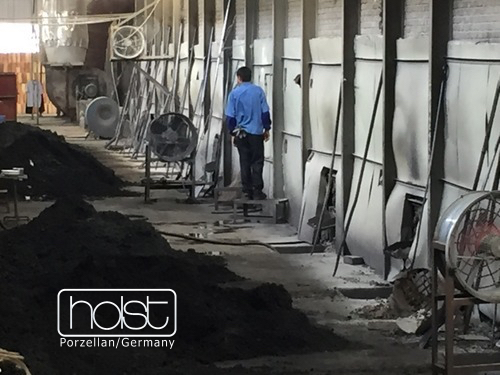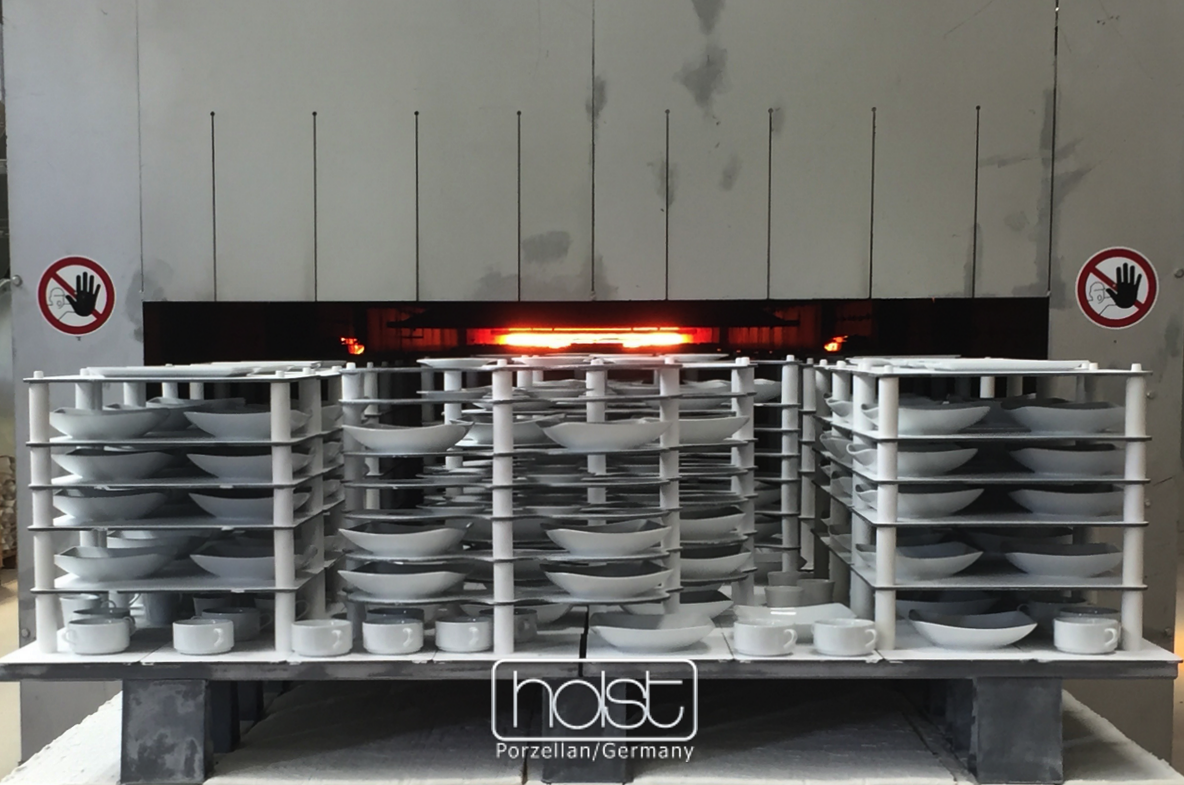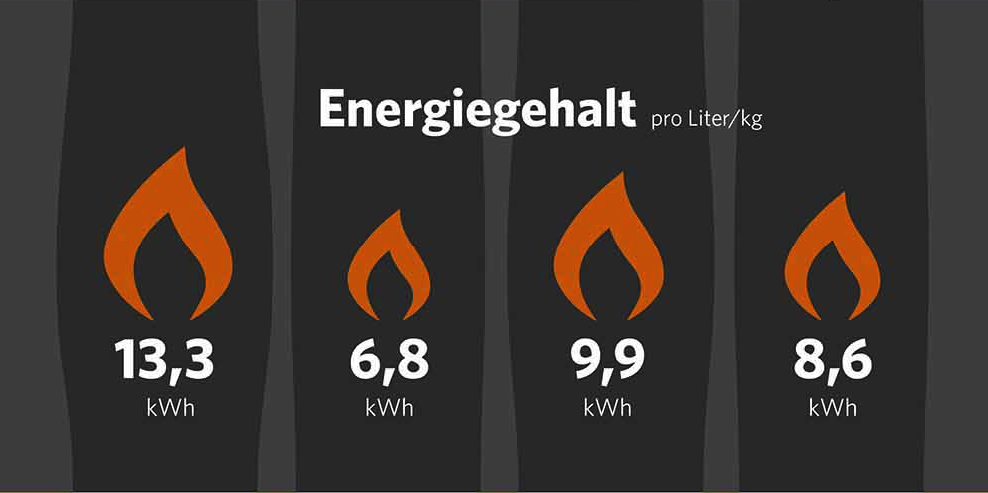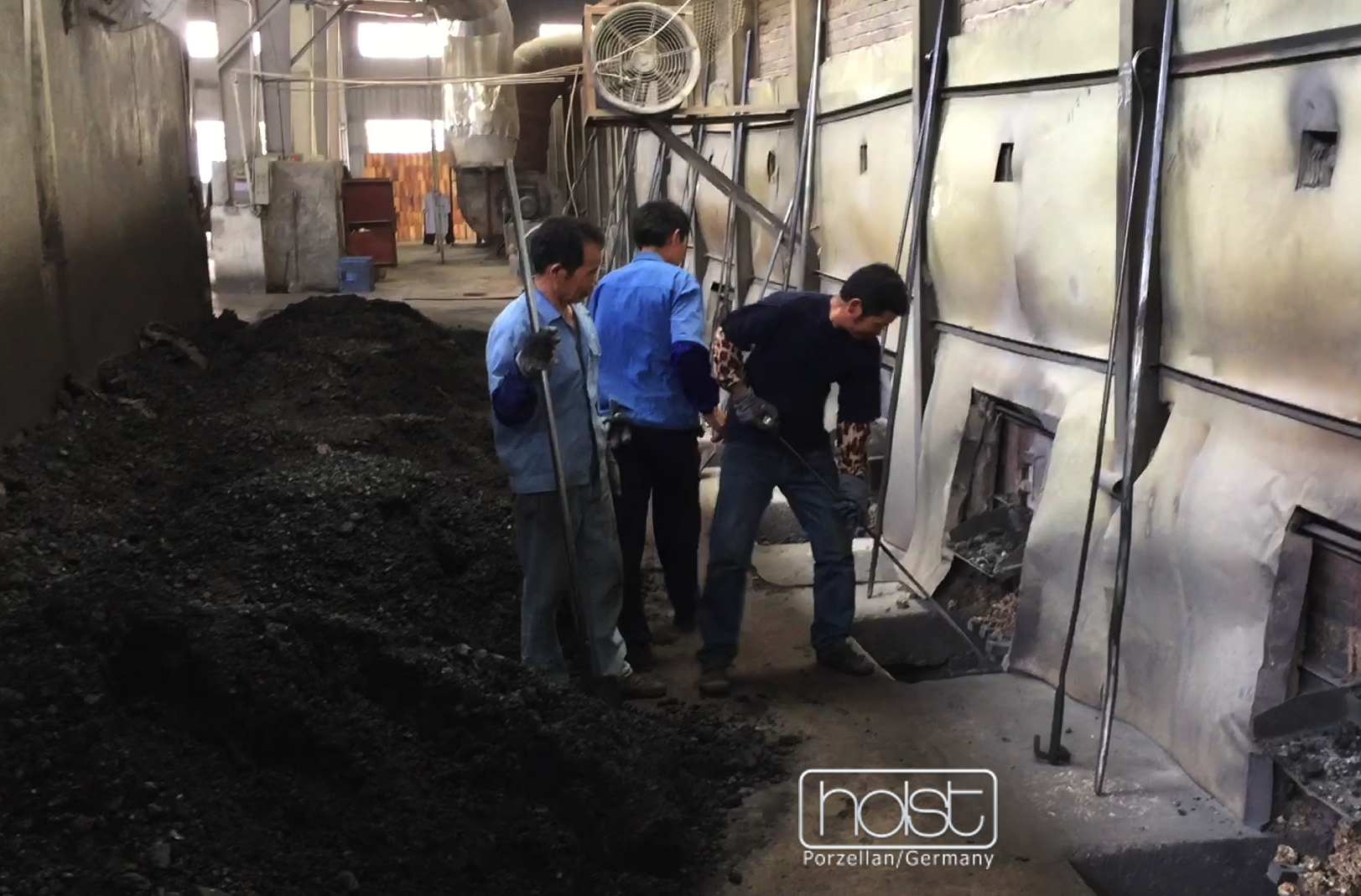Fuel
Firing agent for the production of porcelain & ceramics

Quality feature energy source
Please clarify the difference between a cooked salmon and a smoked salmon. The way the porcelain is fired has an equally important influence on the quality of the final product. Our picture (above) shows a traditional coal stove as it is still used today in parts of China, Vietnam and Thailand. The sight is reminiscent of the movie Titanic, in which a troop of strong men constantly shovels coal into the fire in the belly of a ship; the same is actually true of a tunnel kiln powered by coal.
In the same way that beech wood smoke lays down on a ham, burning residues beat on the white porcelain. Some of these are visible, but worse are the invisible residues such as lead or cadmium, which could penetrate the glaze in the flame mist. It is therefore wrong to assume that white porcelain - without decoration - is always free of hazardous substances that prohibit its use as a foodstuff. During smooth firing, glazes are permeable to gases and therefore susceptible to them.
Modern furnaces today are operated with gas, which emits much less carbon dioxide (Co2), but in no way guarantees that it will not lead to contamination with hazardous substances.

High-quality porcelain, like all other ceramic end products, is fired "in fire". In order to generate this fire for production, two basic components are required: A kiln and appropriate fuels. This section deals with the fuels and their influence on the quality of a tableware item. In the porcelain industry, there are basically 5 types of fuels.
- Natural gas
- Liquefied petroleum gas (LPG)
- Oil
- Carbon
- Electric energy

(Source: With the friendly support of Zukunft ERDGAS GmbH, D10117 Berlin)
Fuel gas
The above-mentioned fuels natural gas (compressed gas / NG Compressed Natural Gas) and liquefied petroleum gas (LPG: Liquefied Petroleum Gas) can be summarized in terms of their problems in the production of porcelain and ceramic tableware. Although the basic materials are different
- CNG natural gas: Mainly methane
- LPG liquid gas: mainly propane and butane mixture
both types of gas contain chemical ingredients such as halogens, chlorine and sulphur (hydrogen sulphide). The energy industry is trying to make the fuels more "biological" and is trying to increase the proportion of biogas and synthetically produced gas. Such gas-fuel variations usually bring new problems, because the chemical composition is not constant. Especially the sulphur content of the gas is difficult to control.
We quote the BFG - Bundesverband für Gasanlagentechnik as follows:
| "... the legislator... only half-heartedly or even partially not at all with regard to the compliance with DIN EN 589. Only in such a way is actually explainable, why only the BFG finds now still additionally to the already well-known inexplicable quantities of exhaust vapour residues (see photo) also larger quantities of deposits from sulfur (see photo) far over the permitted defaults of the DIN EN 589 with investigations at construction units of gas plants. As a consequence, larger quantities of iron oxide were found (see photo), which in the opinion of the BFG are also due to the high sulfur content and which literally decompose the components in the gas plants..." |
This formulation naturally explains that fuel residues alone can cause unwanted soiling through exhaust steam residues on the dishes placed in the oven at any time and in an uncontrollable way. Such exhaust steam residues are among other things responsible for the well-known "pinholes" or for the loss of the LFGB foodstuff commodity suitability.

Fuel oil and carbon
As the firing of furnaces in the porcelain and ceramics industry has virtually died out for reasons of environmental protection and energy efficiency, e.g.
-
Germany already at the end of the 1980s
-
China since 2016
we do not want to describe the problem of "coal and porcelain firing" in detail in our product information. It is sufficient to know that coal kilns basically required a reduction firing, i.e. the placing of the porcelain in firing capsules, because the combustion of fossil fuels produced so many fuel residues that the porcelain could not possibly be produced in an "open oxidation firing". To our knowledge, the last coke ovens in the porcelain industry were shut down in China in mid/end 2017.
Electrical energy
The title alone betrays that electrical energy cannot "burn". Electrical energy is only suitable for operating radiant heaters, be it ceramic radiators, red light or infrared radiators. In commercial porcelain production, electric furnaces are not used for hard firing (glaze firing) because the use of electrical energy is too expensive and not very efficient for the necessary temperature ranges of more than 1,300 °C and less than 1,500 °C.
Furthermore, it is not possible to produce ceramic tableware in reduction firing, since electric furnaces generally require an oxidation process.
Electrical firing energy in the porcelain and ceramics industry is currently (as of 2019) mostly used in so-called "onglaze furnaces" (up to 900 °C) or decorative furnaces (up to 1,250 °C). In a "clean" environment, electric furnaces cause the least precipitation of energy-related exhaust vapour residues and represent the "cleanest" type of ceramic firing in every respect. In the field of technical ceramics, we know electric furnaces whose temperature range extends far beyond the 1,300 °C required for porcelain. Spark plugs, for example, are produced in electric furnaces up to a maximum temperature range of 1,700 °C.
This gives reason to hope that the further development of environmentally friendly electric ovens will in the long term lead to their use in the production of tableware.
